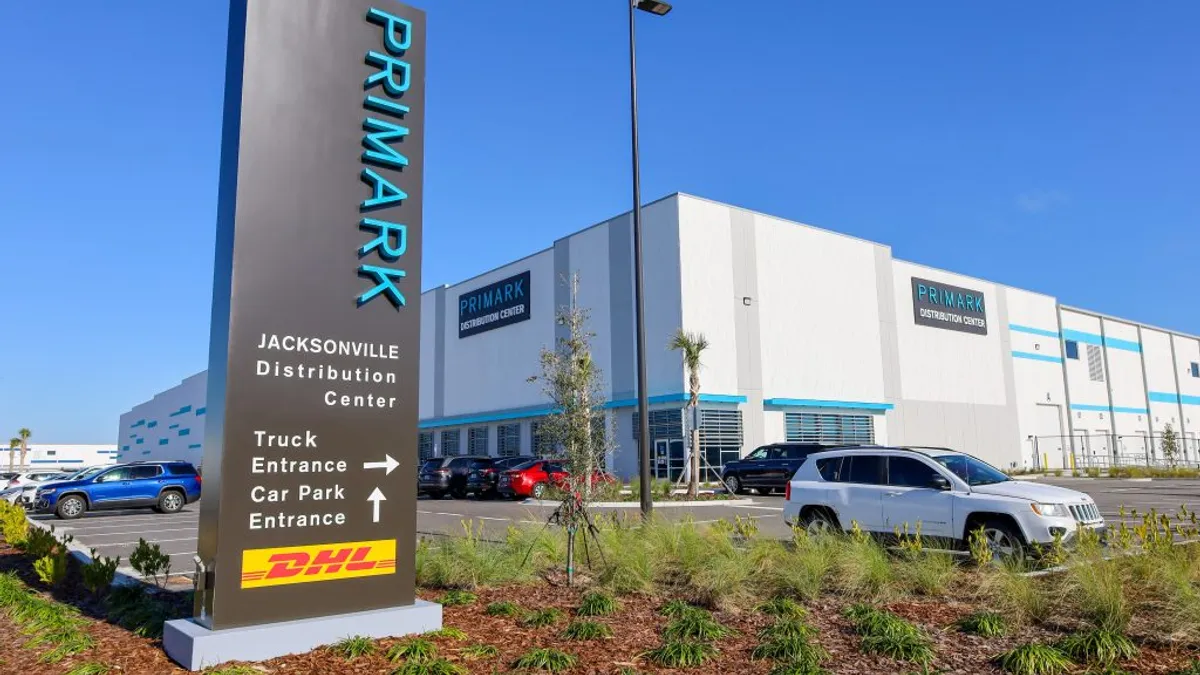Dive Brief:
- Ireland-based retailer Primark opened its second U.S. distribution center this month in Jacksonville, Florida, the Jacksonville Port Authority announced in a Feb. 7 press release.
- The 550,000-square-foot facility will handle import cargo that arrives through the Jacksonville Port Authority, which is minutes away. It is also located within a one-day truck drive of 100 million consumers, per the release.
- “The opening of this distribution center in Jacksonville comes at the perfect time for the brand and our customers as we set our sights on continued growth across the US, including in Florida, Texas, as well as our first store in Tennessee,” said Primark U.S. President Kevin Tulip.
Dive Insight:
The Jacksonville facility adds to Primark’s U.S. logistics footprint, which previously included a distribution center in Bethlehem, Pennsylvania. The new site is a strategic move by the retailer as it looks to expand further into the Southern market, including in Florida and Texas.
Primark began using the port in February and is using the SSA Jacksonville Container Terminal at Blount Island to handle imports, Jaxport Chief Communications Officer Chelsea Kavanagh told Supply Chain Dive.
“Choosing Jacksonville for your distribution operations speaks volumes about the advantages our city offers retail shippers— including strong labor force, efficient highway and rail connections, thriving port with a Foreign Trade Zone, and same day-access to nearly 100 million US consumer,” Jaxport CEO Eric Green said during an opening event of the Primark warehouse on Feb. 7.
The fashion retailer will also be leveraging services from DHL and JZI IntermodaLogistics. JZI is a logistics company based in Florida and offers domestic logistics, asset-based trucking operations, international freight forwarder/NVOCC and warehouse operations.
This story was first published in our Operations Weekly newsletter. Sign up here.
Clarification: A mention of the facility's location in the second bullet was updated to specify the distribution center's proximity to the port and consumers.














